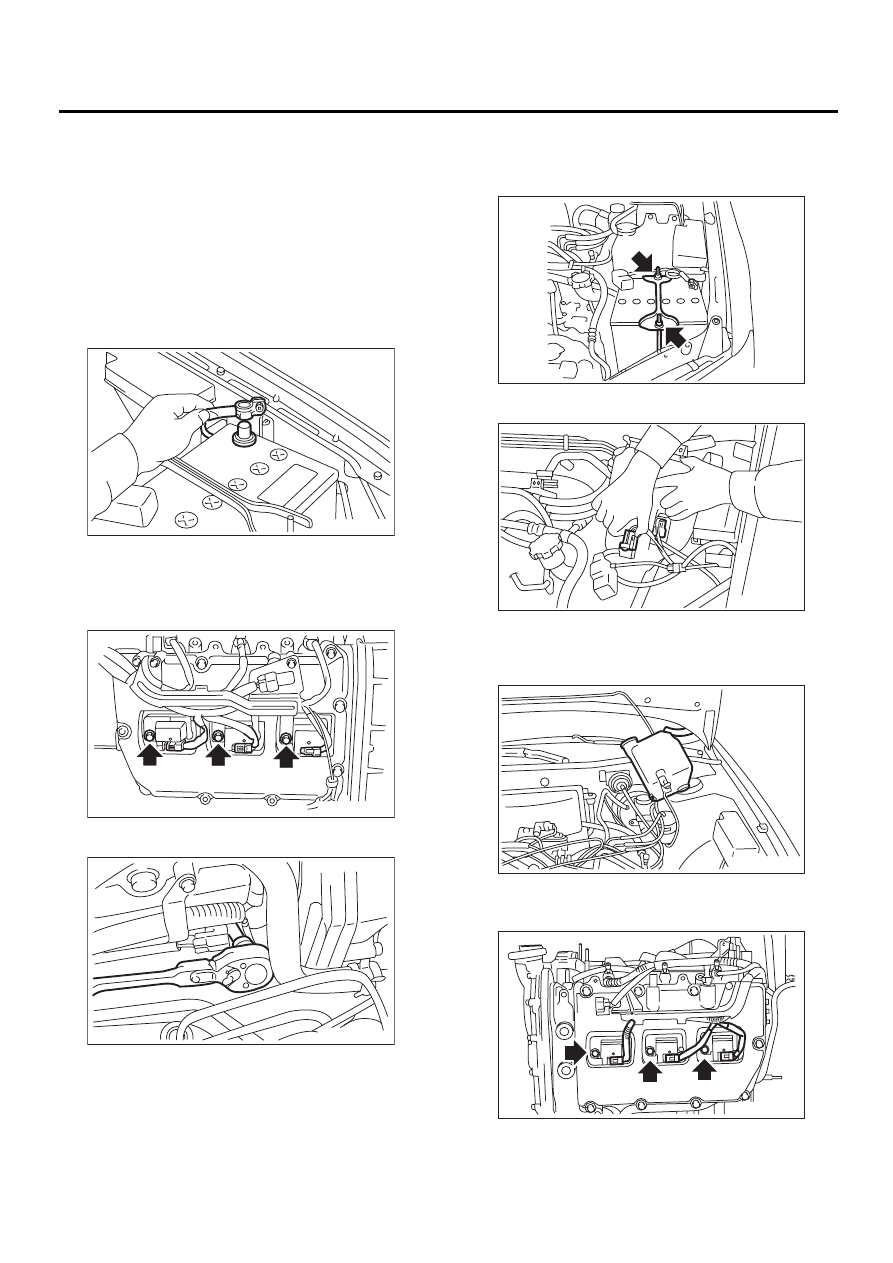Subaru Legacy III (2000-2003 year). Manual - part 293

IG(H6DO)-4
IGNITION
SPARK PLUG
2. Spark Plug
A: REMOVAL
CAUTION:
All spark plugs installed on an engine, must be
of the same heat range.
Spark plug:
NGK: PLFR6A-11
1. RH SIDE
1) Disconnect battery ground cable.
2) Remove air cleaner lower case. <Ref. to
IN(H6DO)-5, REMOVAL, Air Cleaner.>
3) Disconnect connector from ignition coil.
4) Remove ignition coil.
5) Remove spark plugs with the spark plug socket.
2. LH SIDE
1) Disconnect battery cables and then remove bat-
tery and battery carrier.
2) Disconnect washer motor connector.
3) Remove the two bolts which hold the washer
tank, then take the tank away from the working ar-
ea.
4) Disconnect connector from ignition coil.
5) Remove ignition coil.
FU-00009
IG-00053
IG-00054
IG-00055
IG-00056
IG-00057
IG-00058